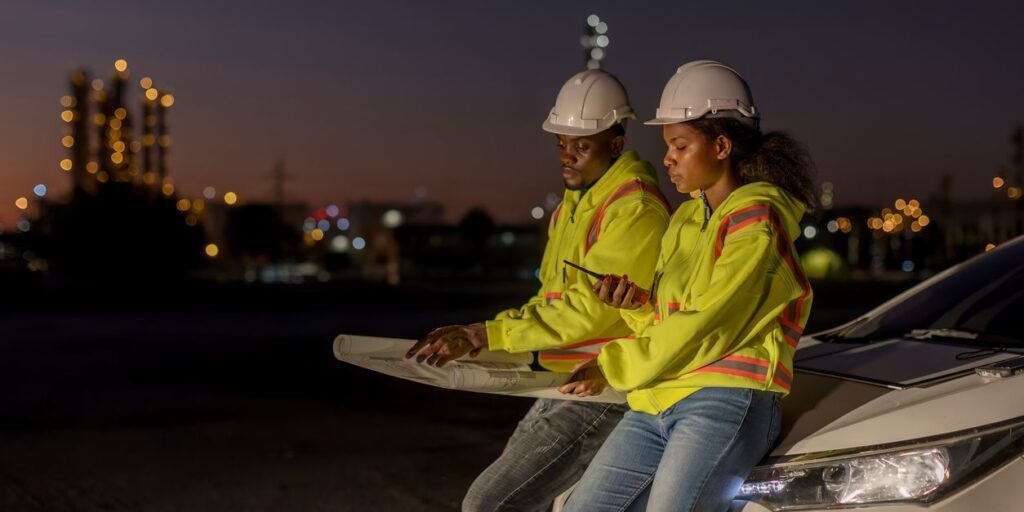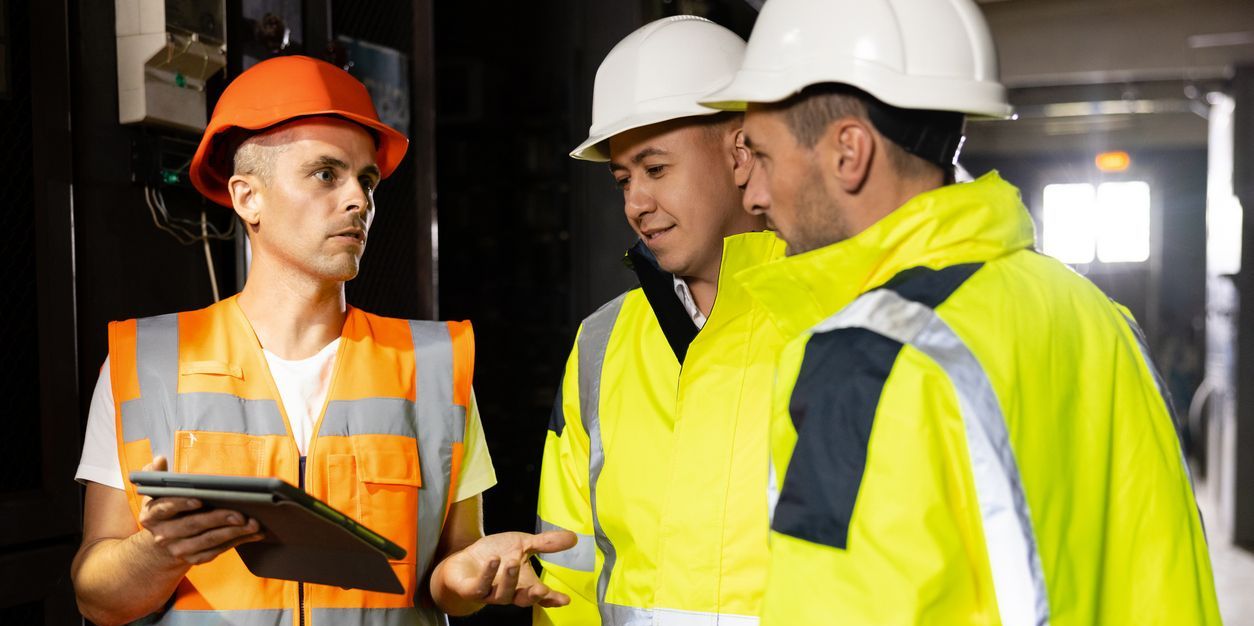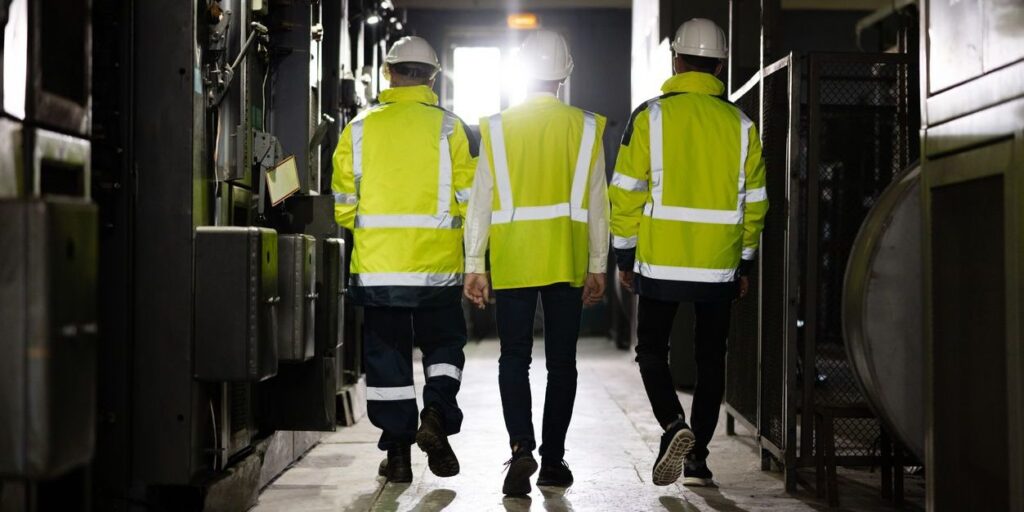Fall in New England; daylight hours shrink noticeably, and the weather often brings overcast skies, rain, and fog. Consequently, the risk to workers on a busy job site or near a roadway increases dramatically. For this reason, understanding and implementing a proper high-visibility safety program is not just a good idea; it is an absolute necessity. This guide is designed to explain the importance of high visibility workwear and help you make the best choices to keep your team safe all season long.
Why Visibility Becomes Critical in Autumn
The primary goal of any safety program is to prevent accidents before they happen. In the fall, the chances of a worker not being seen by a vehicle or equipment operator are significantly higher than in the bright summer months. In fact, many on-the-job accidents are caused by simple visibility issues. The sun is lower in the sky, creating long shadows and intense glare during dawn and dusk, which are active times for many maintenance and industrial crews. As a result, providing your team with the right protective apparel is one of the most effective safety measures you can take.

Understanding ANSI Classes
When you start looking at high visibility workwear, you’ll immediately see references to ANSI classes. This might seem complicated, but it’s actually a straightforward system designed to match the level of protection to the level of risk. The ANSI/ISEA 107 standard is the nationally recognized guideline, and it breaks garments into three main classes.
Type O, Class 1
Class 1 apparel is for workers in off-road situations where traffic is slow, not exceeding 25 mph. For example, this could be a parking lot attendant or a warehouse worker who needs to be seen by forklifts. This class provides the minimum amount of high-visibility material and is meant for environments where workers are well separated from traffic.
Type R, Class 2
This is a significant step up and is required for workers near roadways where traffic speeds are over 25 mph. Therefore, you’ll see road crews, utility workers, and survey crews wearing Class 2 vests and shirts. These garments have more fluorescent and reflective material than Class 1, offering much greater visibility from a distance and in various weather conditions.
Type R, Class 3
Class 3 offers the highest level of visibility and is intended for workers in the most dangerous, high-risk environments. Specifically, this includes crews working on highways and interstates or in terrible weather conditions like fog or blizzards. Class 3 high visibility workwear must have sleeves and significantly more reflective material, making the worker maximally visible from all angles and at great distances.
More Than Just a Vest The Modern Uniform System
Years ago, a simple orange mesh vest thrown over a sweatshirt was the standard. However, today’s safety apparel is far more advanced and integrated. A truly effective program treats high-visibility gear as a complete system, not just an afterthought.
Garments for Every Condition
Your team’s safety and comfort are directly linked. Because of this, it’s important to provide options for different types of weather.
- T-Shirts and Vests: Ideal for warmer fall days, providing a breathable yet compliant base layer.
- Sweatshirts: As the temperature drops, a high-visibility sweatshirt offers warmth without requiring a bulky jacket.
- Jackets: A waterproof, high-visibility jacket is an essential piece of equipment for anyone working in the rain or cold, ensuring they stay both seen and dry. Our
industrial uniform programs
The Importance of a Managed Program
Providing the gear is only the first step. Maintaining it is equally important. Dirt, grease, and grime can severely diminish the reflective properties of high visibility workwear. Furthermore, improper home washing can damage the delicate reflective tape and fade the bright fluorescent background.
This is precisely why a
A Commitment to Your Crew’s Safety
Ultimately, creating a safe work environment is about showing your team you care. Providing them with high-quality, clean, and effective safety gear demonstrates a deep commitment to their well-being. It boosts morale and fosters a culture where safety is a shared responsibility. Because when an employee feels protected, they are more focused and productive. The investment in a proper high visibility workwear program pays dividends in accident prevention and a stronger, more confident team.
Are you ready to ensure your crew is seen and safe this fall? Let’s talk about building the right safety apparel program for your specific needs.
Contact New England Uniform today for a free safety assessment and to learn more about our high-visibility options.


